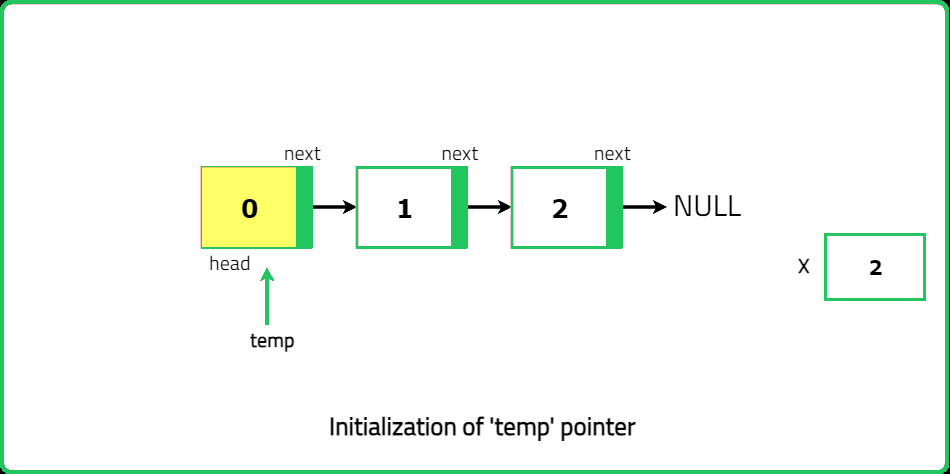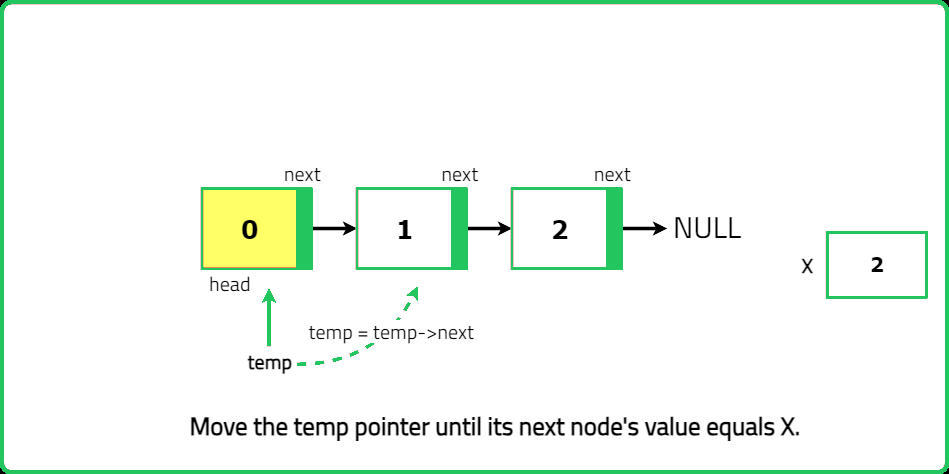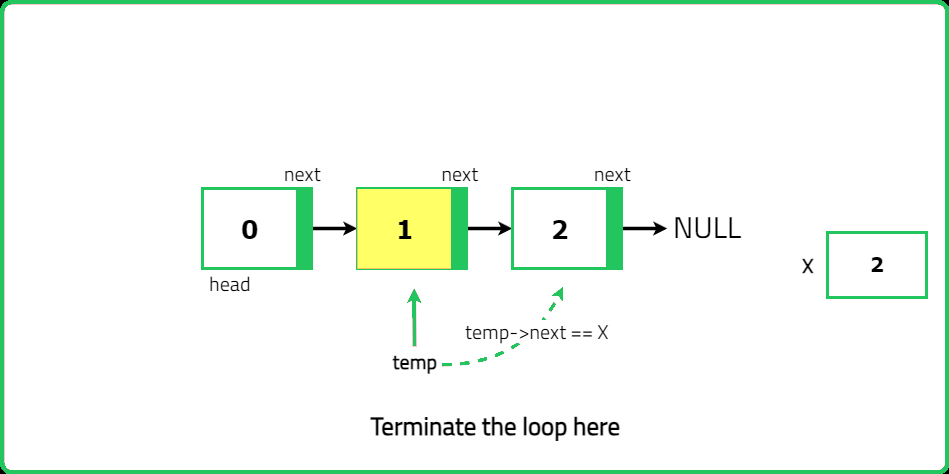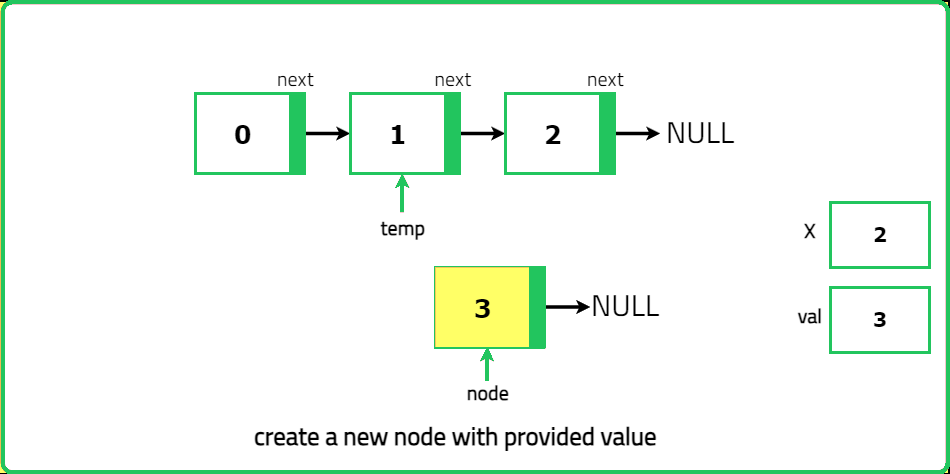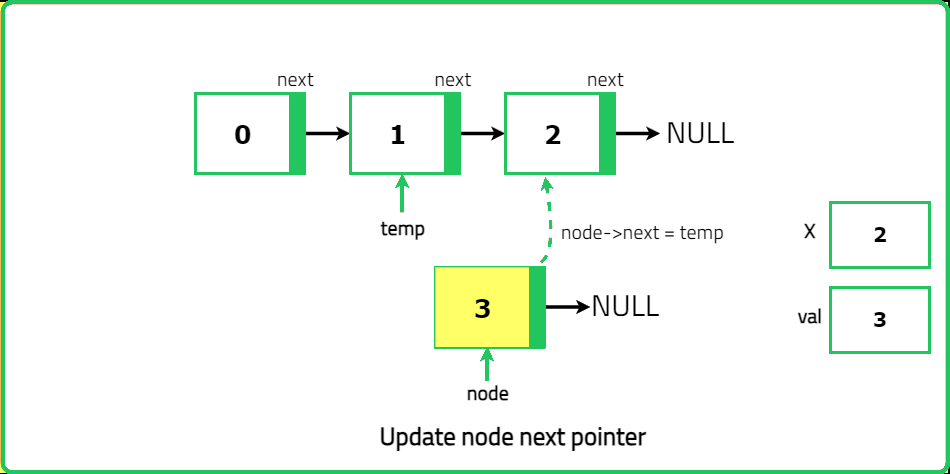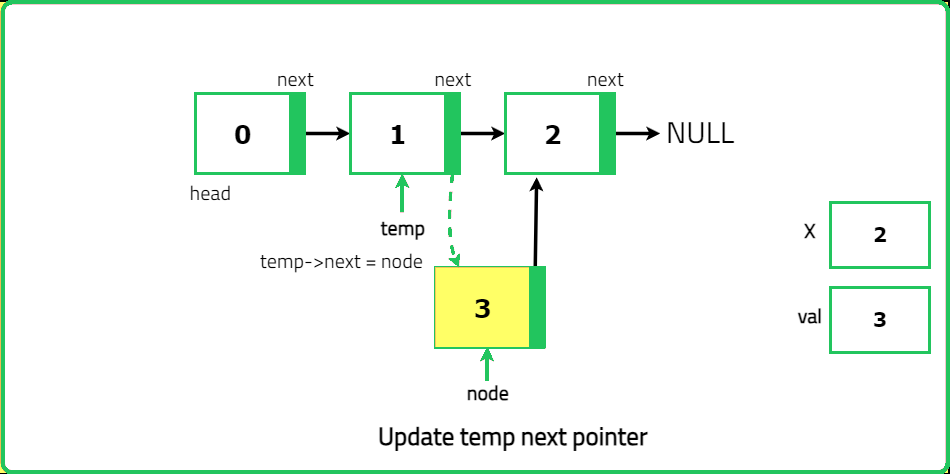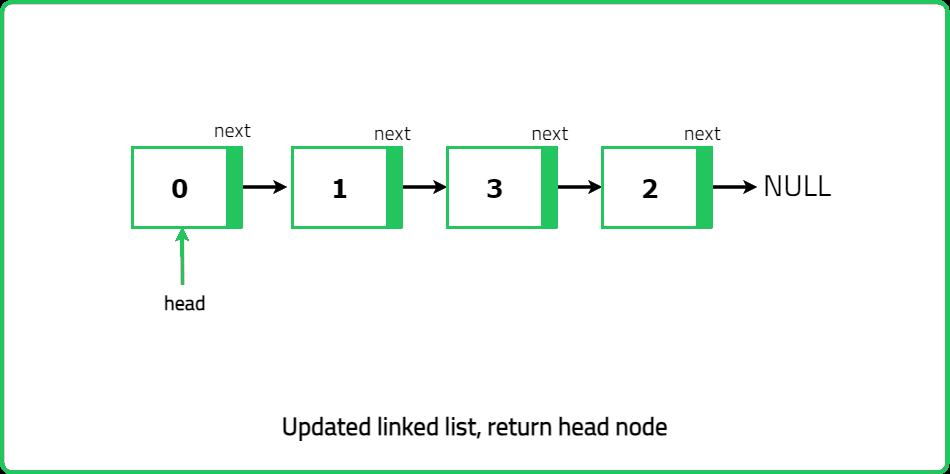Insertion before the value X in LL
Linked-List
Fundamentals (Single LL)
Easy
Given the head of a singly linked list and two integers X and val, insert a node with value val before the node with value X in the linked list and return the head of the modified list.
Examples:
Input: head -> 1 -> 2 -> 3, X = 2, val = 5
Output: head -> 1 -> 5 -> 2 -> 3
Explanation: The node with value 5 was added before the node with value 2
Input: head -> 1 -> 2 -> 3, X = 7, val = 5
Output: head -> 1 -> 2 -> 3
Explanation: No node was added as X was not found in the list.
Input: head -> 1, X = 1, val = 10
Constraints
- n == number of nodes in the Linked List
- 1 <= n <= 1000
- 0 <= ListNode.val <= 100
- 0 <= X <= 100
- 0 <= val <= 100
- Number of nodes with value X is 0 or 1
Hints
- Traverse the list from the head to locate the first node with value X.
- If X is found at the head, the task becomes straightforward, create a new node and make it the new head. For all other positions, keep track of the node preceding X during traversal, as this is where the insertion will occur.
Company Tags
Rakuten
JPMorgan Chase
HCL Technologies
Visa
DoorDash
Cerner
MongoDB
OYO Rooms
Zomato
Pinterest
GE Healthcare
Ubisoft
Square
Epic Games
Mastercard
Bain & Company
Byju's
Western Digital
Optum
PayPal
Broadcom
Micron Technology
Seagate Technology
Unity Technologies
Swiggy
TCS
Cognizant
Accenture
Infosys
Capgemini
Wipro
